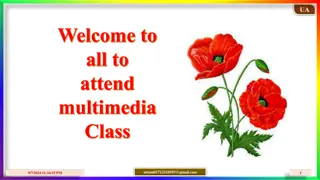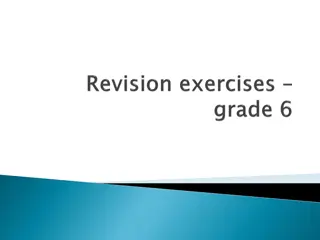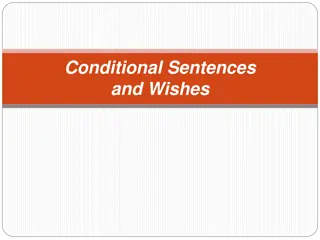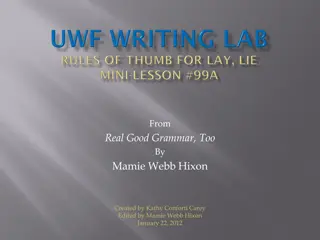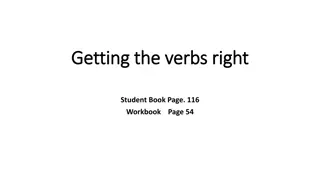Understanding Verb Forms: Lie/Lay, Sit/Set, Rise/Raise
Learn about the correct usage of transitive and intransitive verbs with examples of common verb pairs like lie/lay, sit/set, and rise/raise. Understand the distinctions between these verb forms to improve your grammar skills and communication accuracy. Enhance your knowledge through this detailed lesson from the UWF Writing Lab Grammar Mini-Lesson Series.
Download Presentation

Please find below an Image/Link to download the presentation.
The content on the website is provided AS IS for your information and personal use only. It may not be sold, licensed, or shared on other websites without obtaining consent from the author. Download presentation by click this link. If you encounter any issues during the download, it is possible that the publisher has removed the file from their server.
E N D
Presentation Transcript
Writing Lab Verb Forms: Lie/Lay, Sit/Set, Rise/Raise
Transitive Verb Transitive Verbs have an object. Set to put or place something. Set, Sets, Setting, Set, (has/have/had) Set Raise to lift up Raise, Raises, Raising, Raised, (has/have/had) Raised Lay to put or place something Lay, Lays, Laying, Laid (has/have/had) Laid
Intransitive Verb Intransitive Verbs do not have an object. Sit to be seated, or in a resting position Sit, Sits, Sitting, Sat, (has/have/had) Sat Rise to go up Rise, Rises, rising, Rose, (has/have/had) Risen Lie to rest or recline Lie, Lies, Lying, Lay, (has/have/had) Lain
Thats all, folks! This lesson is part of the UWF Writing Lab Grammar Mini-Lesson Series Lessons adapted from Real Good Grammar, Too by Mamie Webb Hixon To find out more, visit the Writing Lab s website where you can take a self-scoring quiz corresponding to this lesson











